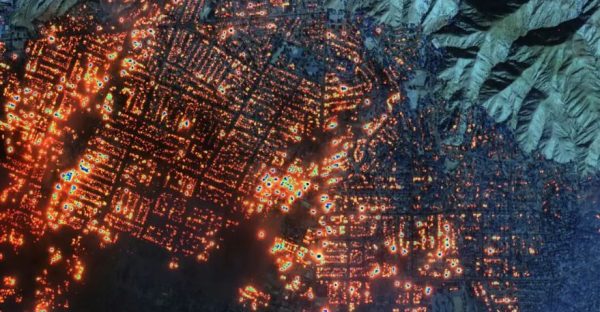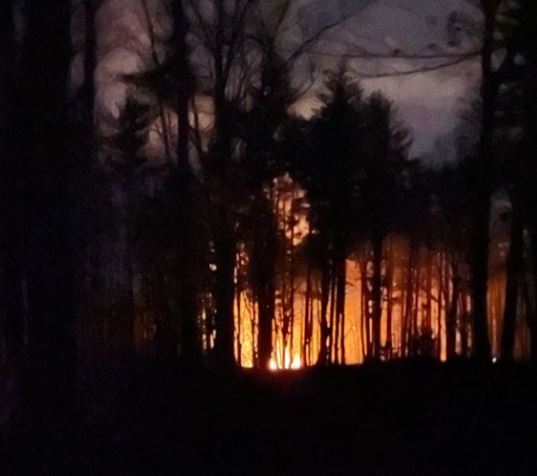Historically destructive wildfires continue to devastate Los Angeles. While the fires may not be new to Southern California, the intensity of the recent circumstances are unprecedented.
The conditions that allow for a fire so large to fulminate have been coined by the term “fire weather.” They are dependent on several settings including relative humidity, recent rainfall, overall temperature, dry vegetation, and wind speeds. The prolonged droughts that have become typical for Southern California are what allow for the grounds to burn at the slightest ignition.
According to recent research, climate change plays the most prominent role in such an active fire season through the increased temperatures and drier conditions. The research also suggests that climate change may be linked to roughly a quarter of the fuel moisture deficiency when the fires began.
One of the most impactful byproducts of any fire is the hydrophobic soil that is probably created when the blaze ceases. After any outdoor fire, this is a likely occurrence that is a result of the initial layer of dirt being burned. Between that and the plant particles that have also suffered, there is a natural waxy, water repellent coat that forms over the soil. This occurs as the soil begins its cooling process, condensing the gas and wrapping around the earth.
This is the status that we see in Southern California and why wildfires are so common and recurring in the area.
Professor Shannon O’Leary of the Biology Department at Saint Anselm College was able to share more in depth insight about climate change from a local standpoint. Right here in New England, the Gulf of Maine has some of the fastest warming on the planet, causing chaos both under and above the water’s surface.
Range expansion, where animals begin to occupy a larger geographical area than before, is an outcome of this. “Frequently, organisms are limited by their temperature tolerance, so when water does get warmer, you are essentially unlocking habitats for them and they move in,” shared Professor O’Leary. This causes a huge disruption as they compete with the species that are native to the new territory.
The warmer temperatures are beginning to spark environmental reactions across the entire calendar year as winters are seeing spring-like climates. Professor O’Leary shared an interesting example of this phenomenon: “Think about buds on a tree, like in apple orchards. If they bud in one of the freak warm weeks of
January and there’s another cold snap and they die, that has devastating effects on our agriculture.”
Some of the unpredictable conditions that come with global warming is the loss of precipitation. The storm patterns that are faced in New England are similar to those of Southern California, although they are still more natural disaster driven. In the words of Professor O’Leary, “When it rains, it pours, and when it doesn’t rain, it doesn’t rain at all.” The drought is what primarily causes the dry vegetation, creating a more rational fear of a fire igniting.
Earlier in the school year, in November of 2024, the grounds of the Saint Anselm College community were faced with a similar scenario. While the cause of the “O-Zone” fire was probably that of a man-made origin, the aftermath of the land remains severely damaged. It was a kindling fire that began to spread rapidly due to the drought that was already in the area. As the flames have left behind loads of ash and even more dead greenery, the chances of there being another fire have now increased.
The flames of the brush fire in the Father Bernard Court have sparked concern over the campus’s fire safety initiation. Students and faculty alike have questioned what the school’s plan is if something like this were to happen again, or at a more extreme level.
The school was able to see first hand how Campus Safety would handle a situation such as the ones in Southern California, even if it was under unfortunate circumstances. The Director of Campus Safety, Scott Dunn, was able to share some more background knowledge behind an operation like this. They were able to work seamlessly with Goffstown Fire and Goffstown EMS to quickly get in and respond to the matter at hand.
“The college has a comprehensive Emergency Operations Plan that assigns command centers and duties to certain personnel,” shared Dunn. This means that there are staff members that have had extensive training on the “to-do’s” in extreme circumstances. Through these faculty and those with authority roles, there would also be an emergency alert system sent out to make sure that everyone is aware of the happenings.
Directly within Campus Safety, they are staffed with highly trained and experienced personnel. Their officers come from several retired law enforcement agencies from both a local and state level of standpoints. Dunn also shared that the, “department has implemented monthly training for our officers which includes, but is not limited to, drug recognition, active shooter training, emergency response training.”
As the Campus Safety department is one that is open all hours of the day, every day of the year, it is likely that if there was anything urgent that they would notice it pretty immediately. If they were not able to get word of it firsthand, their officers are always patrolling the campus so they are able to promptly respond to whatever calls they may receive.
While the Campus Safety staff plays a crucial role in maintaining security and responding to emergencies on campus, it is equally important to consider the broader challenges that require collective action, such as addressing climate change.
Going forward, there is an expectation that the climate will continue to get worse unless significant actions are taken to address it. Realistically, it is not so much about what the individual is doing, but what the community is in order to gain a greater impact. Especially when there are challenges outside of one’s control, such as that in a schoolwide setting.
For those looking to get their voices heard in the conversation of climate change, advocating in a group is a good way to headstart that. It creates the ability to accomplish a quicker movement while still aiming for the common goal. Start locally and grow from there– together there is the potential for a more sustainable future.



